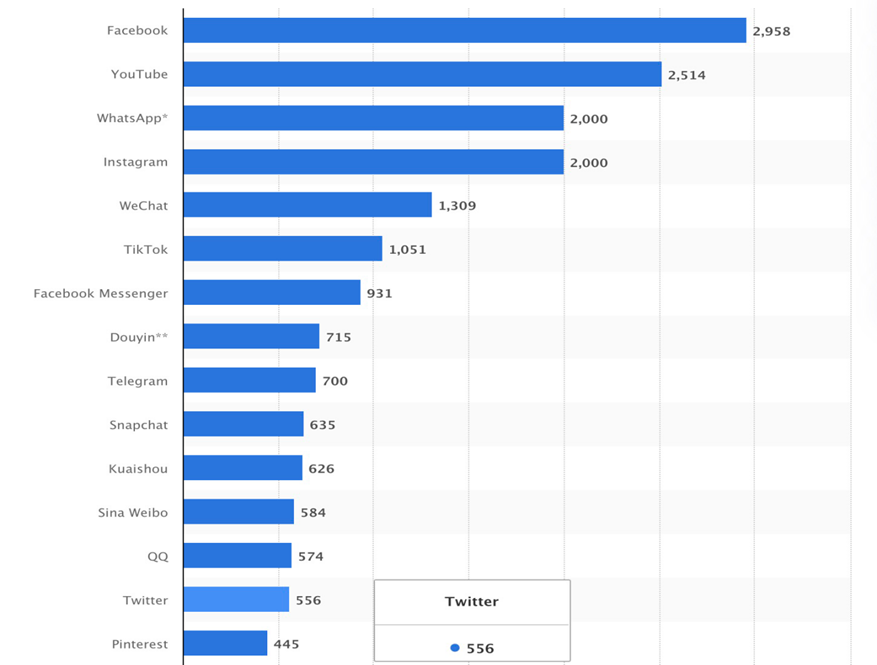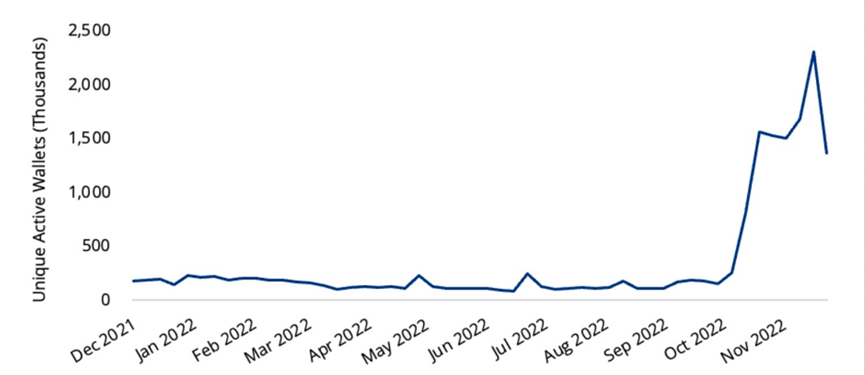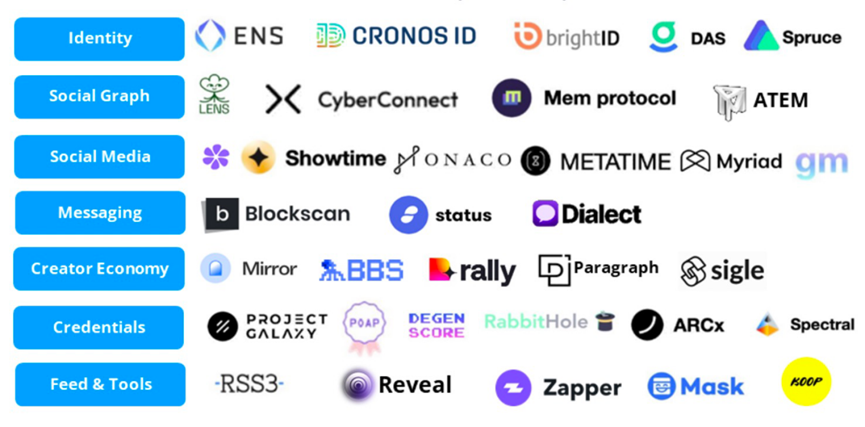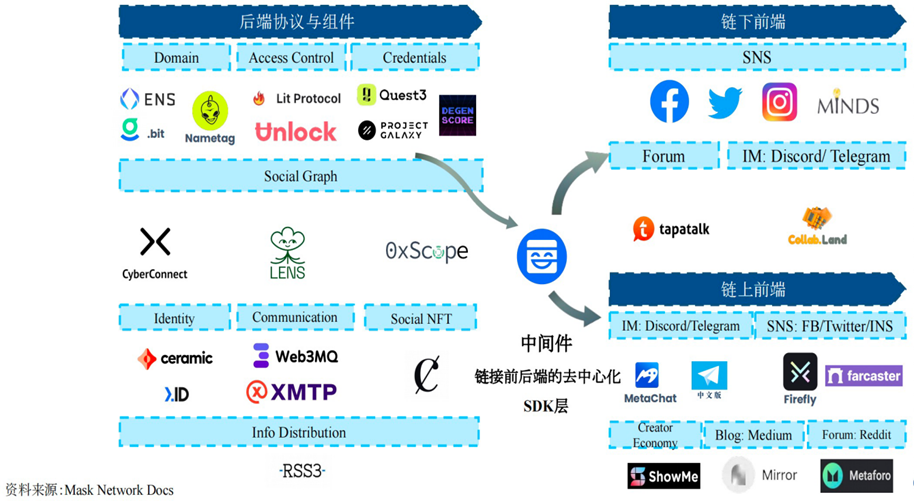
Original article: " AC Capital: How to Break Social Fatigue?" Explore the current status and future of Web3.0 social products "
Author: Zhong Yi
With the popularity of Web3.0 social products, the number of its users continues to rise. However, once the AirDrop is over, the number of daily active users will drop sharply. What does the project need to stay alive? Whether tokenization can actually incentivize user participation remains a mystery. Coupled with the sharp drop of tokens in the secondary market, is there a place for Web3.0 native applications, and how to balance the contradictory relationship between content review and decentralized social networking?
These questions are what entrepreneurs in the Web3.0 social field need to think about. In this article, we will discuss from the aspects of social nature, the meaning, classification and characteristics of Web3.0 social products, problems and optimization directions, etc., to help you better understand the current status and future of Web3.0 social products , and provide some ideas to solve the problem of social fatigue.
The essence of social networking is "relationship + interaction between people", which can be broadly divided into acquaintance interaction and interaction based on user interests. However, the total number of encrypted natives of Web 3.0 is already small, so products that focus on acquaintance interaction may be premature. Interaction based on user interests requires the creation of new relationships in new interaction scenarios, and simply copying and migrating social relationships from other platforms is not feasible.
01. Why do Web3.0 social products attract much attention?
It is predicted that by 2027, the number of social media users worldwide will reach nearly 6 billion. Currently, the average Internet user spends 144 minutes a day on social media and instant messaging applications. Although traditional centralized social platforms have a huge user base, they also face many problems, such as data leakage, content censorship, and algorithmic bias.
For this reason, more and more people are paying attention to Web3.0 social products. Web3.0 social products are based on blockchain technology, which can realize a decentralized social experience and ensure the privacy and security of user data. At the same time, Web3.0 social products can eliminate the censorship and algorithm bias of the centralized platform, and bring more autonomy to the original content creators. Therefore, Web3.0 social products have attracted much attention and may become one of the trends in the development of social media in the future.

Figure1.Source: https://www.statista.com/statistics/272014/global-social-networks-ranked-by-number-of-users/
As you can see from this chart, Facebook is the dominant player in the social media space with over 2.9 billion monthly active users. Meta Platforms owns four of the largest social media platforms with over 1 billion monthly active users, including Facebook (core platform), WhatsApp, Facebook Messenger and Instagram. These massive centralized players have managed to monopolize entire industries. However, with the emergence of SocialFi, this situation may be broken.
The emergence of SocialFi is to make up for the shortcomings of traditional social platforms. Twitter co-founder Jack Dorsey once summarized three principles that social media should follow:
1. Social media must be resilient to corporate and government control;
2. Only the original author can delete the content they made;
3. Auditing is best achieved through algorithmic selection.
Based on the principles of fairness and decentralization, blockchain social media applications will flourish in late 2022. This can be seen from the dramatic increase in the total number of active wallet addresses interacting with the smart contracts of social DApps. At present, the total number of smart contracts of social DApps is growing rapidly, and the new trend of SocialFi may completely change the pattern of social media industry.

02. Common classification and characteristics of Web3.0 social products
Currently, popular social and DID projects mainly include infrastructure, middleware, applications, and tools. Among them, the SocialFi track is gradually developing and growing. Many projects are based on social tokens, integrating DeFi elements, and constantly updating and upgrading their technologies, becoming SocialFi projects.
According to the issuance projects of Social Tokens, they can be divided into the following categories:

- Personal Tokens: Token holders can access an early fanbase, enjoy discounts or early access to events, and earn merchandise, NFTs, and more. This token represents a token of status or connection participation, and early creators or entrepreneurs can be financially rewarded. Typical projects include RAC, a fan token launched by Grammy Award winner DJ RAC (André Allen Anjos) based on Ethereum, and ROLL (CreatorToken), Roll is one of the old social token issuance platforms, through which creators ERC-20 tokens can be created, i.e. personal social tokens issued for content creators. In addition, MeTokens and MintGate are both Ethereum-based social token issuance platforms, while ALEX is a social token project built on Solana.
- Community tokens: Community tokens are mainly issued and controlled by groups, and are usually governed by a decentralized autonomous organization (DAO). It is mainly used to motivate community members to contribute to the community, such as being allowed to enter the community, enjoying special information, etc. A typical case of the company is WHALE. WHALE Token has various NFT democratized asset ownership. Based on WHALE DAO, the decision-making power around these NFT governance is in the hands of token holders. Other community token projects include well-known projects such as Mirror and FWB, as well as Cent, Yup, Matataki, SWAGG, KarmaDAO, Ark, Seed Club, Forefront, Flamingo. Recently, more attention has been paid to Aavegotchi (GHST): a project that combines DeFi and NFT. By obtaining rare Aavegotchi NFT tokens in the game, users are encouraged to participate in community governance and contribution.
- Minting and distributing platform tokens: Social platform tokens represent the control tokens of the platform, mainly for the convenience of creators to issue and manage Tokenized communities. A typical project is Chilliz, which is a social token under the "fan economy" and focuses on the sports industry. In addition, there are well-known projects such as RALLY and BitClout, as well as Zora, CircleUBI, Loopss, Fyooz, Bluesky, Audius, Mastodon, Nafter, Coinvise, Calaxy, Clarion, etc.
- In addition to the above three types of tokens, social tokens need to use third-party tools such as token distribution in project operations, and these tools sometimes overlap with tools used by other ecological blockchain projects. There are also some typical projects worthy of attention, such as Mask Network. Mask Network bridges the concepts of Web2.0 and future Web3.0 in the form of "plug-ins", allowing users to seamlessly send encrypted messages, encrypted currencies and even DAPPs (DeFi, NFTs, DAOs). Mask Network adopts distributed system technology, so that users no longer need to rely on centralized servers when using social networks. This means your data is more secure and more private at the same time.

03. Some current problems of Web3.0 social platform
The Web3.0 social platform is built on the basis of blockchain technology and the concept of decentralization, which is significantly different from traditional centralized social platforms. However, the Web3.0 social platform also faces some problems in the development process, mainly including the following aspects:
1) High cost of data storage: The Web3.0 social platform stores user data in a distributed manner in the blockchain network. Compared with traditional centralized storage methods, this method requires more computing resources and storage space, which also leads to Data storage costs are high. In Web2.0, hundreds of billions of data are uploaded, liked and commented on social media platforms every day. Such a data scale is a huge challenge for the blockchain. However, some solution paths are emerging to deal with the scalability problem. One of the ways is to parallelize the processing by increasing the block size or sharding. Another method is to store identity information and the ability to read and write data on the chain like Farcaster, while storing other data in the off-chain server FarcasterHubs. Compared with increasing the block size or sharding for parallel processing, this solution pays more attention to the ability to store and process data off-chain, thereby improving scalability. This method can ensure that users fully control their identity, social relationship and data information, while ensuring data security and privacy.
2) Insufficient social network effect: Compared with traditional social platforms, Web3.0 social platforms have lower user scale and activity, so the social network effects on the platform are not as strong as traditional social platforms, and users may face difficulties in finding suitable social circles and Communication issues, etc.
At present, the user groups of Nostr and Farcaster are mainly Bitcoin and Ethereum users, as well as practitioners in the financial technology industry. Attracting a large number of traditional Web2.0 basic users to use SocialFi applications is not an easy task. Just like guiding your relatives to use WeChat at the beginning, the current user interface and operation methods of Web3.0 social platforms are still relatively unfamiliar and incomparable to traditional social platforms. Not convenient. Mass education requires more time and resources. While incentives are an effective approach, they are not sufficient to solve the problem on their own.
Some project parties have come up with some interesting ideas, such as making middleware tools for social media such as Twitter, to help users familiarize themselves with SocialFi and actually own the data they generate. Leveraging on the shoulders of giants can indeed attract users better. However, for some native SocialFi applications, it is very difficult to attract Web2.0 users. Those products that try to simply copy or imitate the design of Web2.0 products are just a kind of opportunistic approach. Only those social products that use blockchain primitives to bring users a transformative experience can truly achieve widespread implementation.
3) Difficulty in cross-platform interaction: Social media platforms in the Web 2.0 era usually lack standardized data formats and APIs, which also makes it very difficult to transmit and share data between different platforms. There is a lack of interoperability between Web2.0 social networks. Users need to switch between multiple social networks, and cannot integrate resources such as friends and followers on different social networks.
With the emergence of different ecosystems and incentive algorithms, it becomes easier for social data to traverse different ecosystems. For example: the Nostr protocol realizes the reintegration of social data through the public-private key system, so that user data of different social networks can be synchronized in the Nostr ecosystem, and when the API is available, data can be disseminated across protocols, thus realizing social networks. intercommunication. This also helps to reduce the user's dependence on multiple social networks and the cost of using them.
Although Lens provides an API for synchronizing data for other DeSoc projects, since different data formats, encryption methods, and verification rules may be used between different DeSoc protocols, cooperation and communication between protocols are required to develop a standardized data format And verification rules, these differences and obstacles may make it difficult to realize SocialFi's large-scale social interaction through cross-platform interaction.
In addition, since different DeSoc protocols have different ecosystems and incentive mechanisms, users may prefer to stay on their original DeSoc protocol instead of choosing to interact across platforms between different protocols. This inertia could lead to fragmentation of the social network, making it more difficult to achieve social at scale on SocialFi.
Therefore, cross-platform interaction to achieve SocialFi's large-scale socialization is still a distant goal. Cooperation and integration between protocols is needed to facilitate data sharing and interoperability and create greater synergy in the social networking ecosystem.
4) To achieve a sustainable economic model: At present, there are two main value capture methods of SocialFi. One is to reward users for their social behaviors, such as forwarding, likes, comments, etc., so as to obtain income. The other is through content creation incentives. Creators with a fan base can create a subscription model in their social tokens and gain advanced access. Additionally, when users want to access the latest content from premium creators, they can pay with tokens. If the content is of such high quality that readers build a reading and subscribing habit, this system will bring more exclusive and shareable content to the SocialFi platform.
However, in most of the projects we have seen so far, 80% of the content providers are the project team itself, and 20% of the content has serious homogeneity problems, or it is difficult to verify the accuracy, and it is difficult to control the update frequency and quality. Readers can only measure the attention of the content through a simple "reading number", and use their own knowledge reserves to verify the authenticity of the content. In this case, the lack of high-quality content creation and incentive mechanisms, as well as an objective and complete review mechanism has become a development bottleneck.
5) Business development has entered a white-hot stage: GameFi has successfully captured the value it provides through the "Play to Earn" model, and players around the world can create and capture value by playing games. The value contained in SocialFi is implicit in social interactions, and it is necessary to demonstrate the personal value of content creators to obtain the value from SocialFi. For Influencers with head traffic, it has also become the first choice for many competitors to enter the SocialFi project. For example, in its SocialFi community, Influencers can more easily realize the fan economy or strengthen the rapid communication within the group, thereby strengthening the connection with fans. This also led to the intense stage of business development of Influencers. SocialFi hopes to create a self-consistent economic system by tokenizing social influence to help more people with different levels of social influence obtain benefits corresponding to their social influence.
04. Optimize the entry direction of social products
In 2023, SocialFi will still be one of the hot spots in the next cycle, and the development potential in this field still deserves attention. In this field, we see more and more middleware and protocols are constantly innovating and evolving, making social applications more stable, secure, fast and scalable.
At the protocol level of SocialFi, technologies for storage, communication, content distribution, and reputation/credentials are constantly innovating. Among them, decentralized social media protocols and middleware are receiving more and more attention. In addition to Nostr and Farcaster, LensProtocol is one of the hottest DeSoc protocols. Based on Polygon's Web3.0 social graph protocol, it makes full use of the potential of NFT and builds a social graph based on NFT. Users fully control their own chain activity track data . Currently, more than 100,000 users have used the protocol, which shows the potential and appeal of social media protocols and middleware.
On the other hand, sharing personal information on public networks is often uncomfortable, and with the rise of social Web 3.0, privacy will be an important area of innovation. ZK technology is a privacy protection technology that can be used to achieve private and secure transactions on the blockchain. Combining SocialFi and zk technology can improve the security and privacy of lending transactions. On the SocialFi platform, zk technology can be used to protect users' transaction data and prevent them from being accessed by unauthorized third parties. At the same time, zk technology can protect the privacy of lenders and ensure that their loan information will not be leaked. However, it should be noted that while protecting privacy, it is also necessary to balance the conflict between anonymity and establishing social status.
To sum up, Web3.0 social products need to constantly create new interaction scenarios and establish new social relationships among users, so as to break social fatigue.
In the future, Web3.0 social products need to explore more innovative interactive methods and social scenarios to attract more users to join. At the same time, issues such as user experience, scalability, and privacy protection need to be addressed. With the continuous advancement of technology, we believe that Web3.0 social products will become more mature and popular.
Article reference:
https://cointelegraphcn.com/news/SocialFi
https://thedefiant.io/three-trends-shaping-SocialFi
https://medium.com/@hello_1905/interpretation-of-damus-communication-logic-the-myth-of-DeSoc-cfb4e3200a1b
https://wearesocial.com/hk/blog/2022/04/more-than-5-billion-people-now-use-the-internet/





